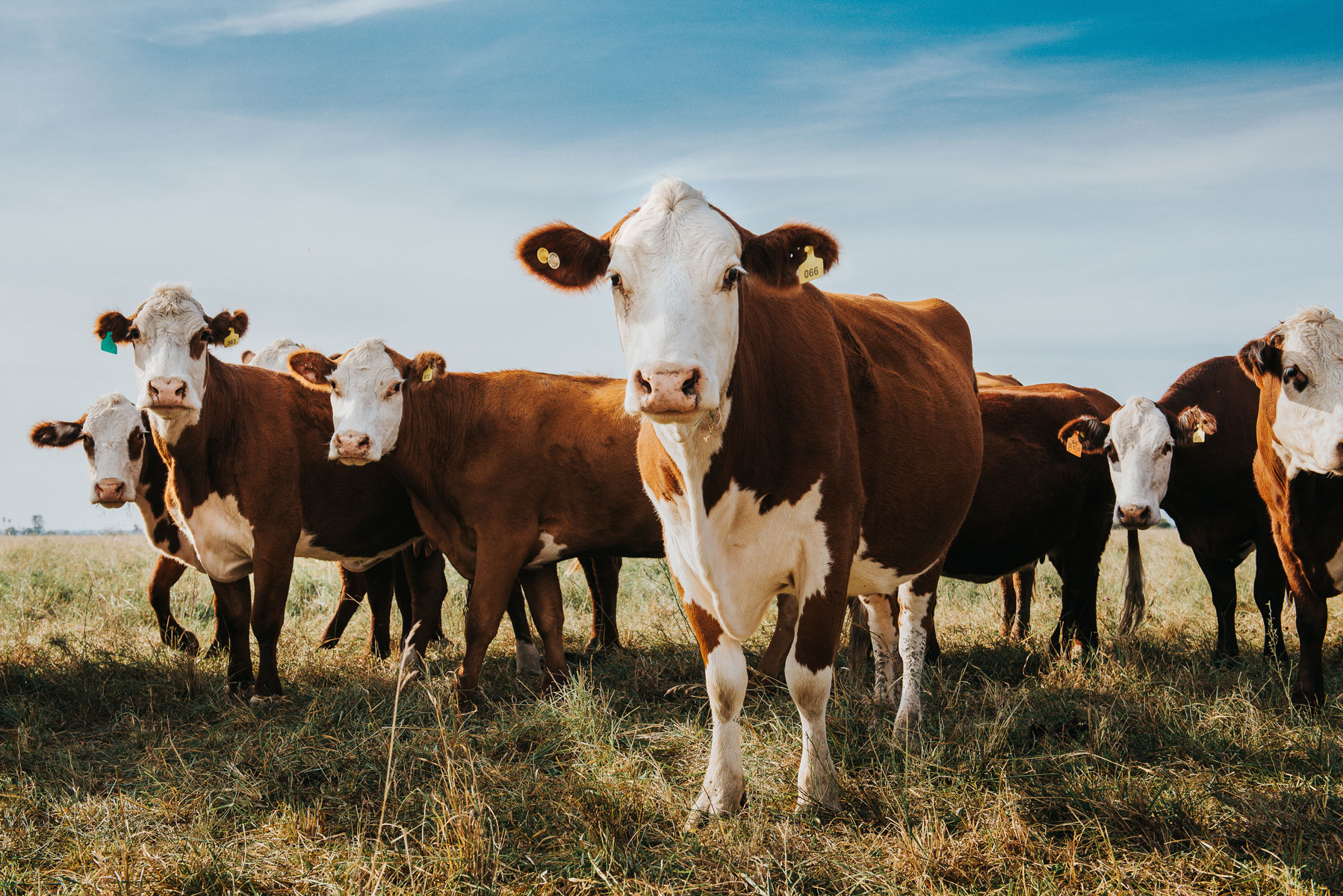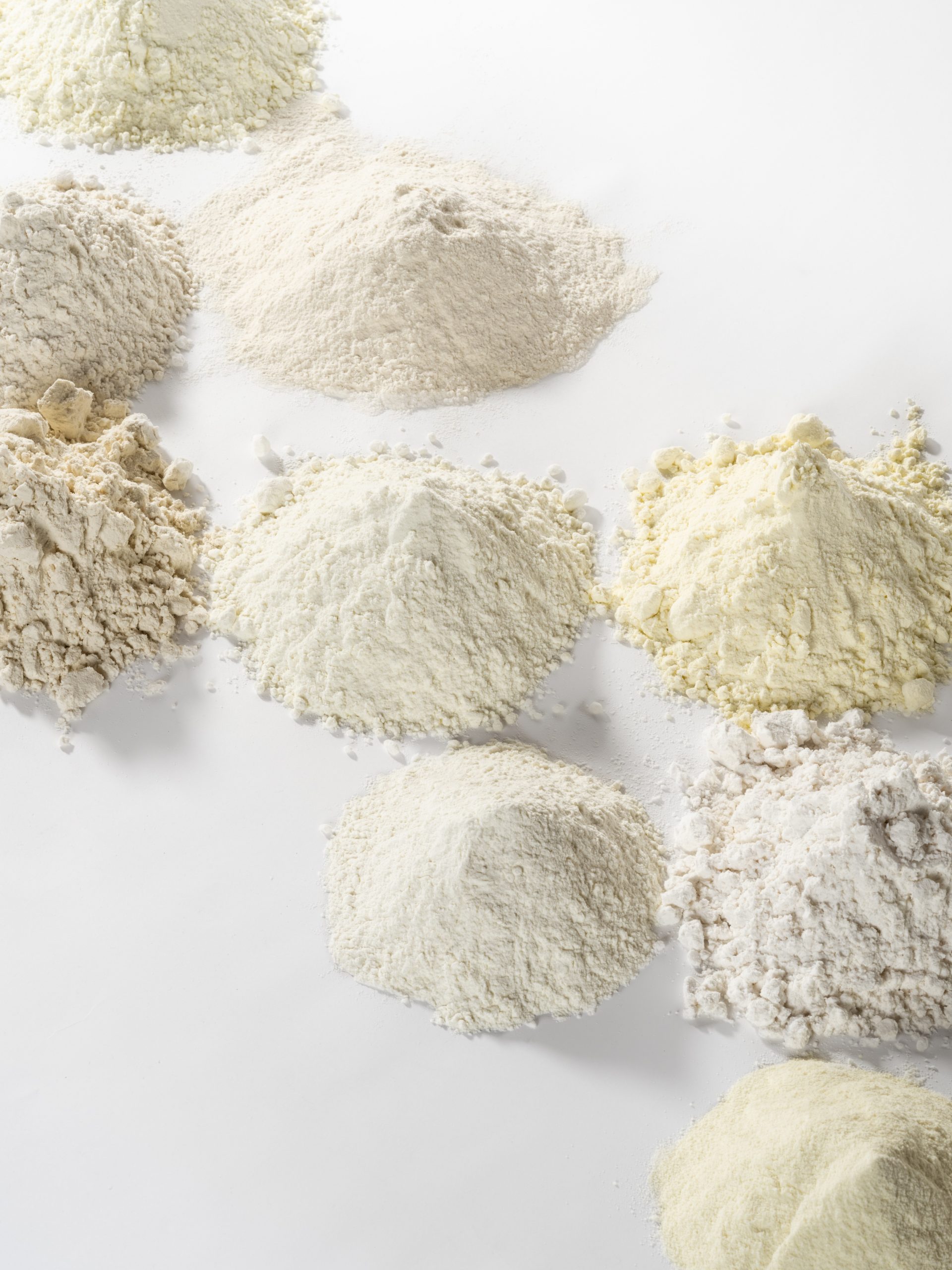What are native proteins?
Native proteins are proteins that are in their natural, properly folded, fully functional form. They are not altered by any denaturing agents, like enzymes, chemicals, heat etc. Native whey proteins are found naturally in fresh milk and they can be separated with a special filtration technology.
At Prolactal, native protein is produced from milk by microfiltration. This is an environmentally friendly physical process that separates the milk into its main components, such as whey protein and casein. Microfiltration is a gentle method, preserving the qualities of the protein. Ultrafiltration is further used to adjust the final protein content in the powder (from 35% to 80%). Ultrafiltration has a similar principle as microfiltration.
Prolactal is proposing a premium ingredient to the market, by manufacturing native whey proteins directly from milk.
Whey protein can be obtained from milk or as a by-product from the cheese-making factories (sweet or acid whey). Traditionally, sweet whey is produced by the addition of rennet to milk, while acid whey is produced by acidification with chemicals. Both sweet and acid whey has been in the presence of a denaturing agent.
Native whey protein: The perfect ingredient for on-trend products
In recent years, the dairy and sports nutrition markets have observed a significant shift in consumer demand toward more natural and healthy food ingredients. This trend is observed in the sports nutrition market and at the same time, the changes in lifestyle are illustrated by the growing segment of’ active consumers’, which are interested in nutrition and healthy living.
Dairy protein supplier Prolactal is helping product manufacturers to tap into this important trend and is introducing native proteins derived directly from high-quality milk processed in the Alpine Region. Offering more natural products based on a few pure ingredients can create exciting opportunities for our customers to engage new audiences and grow their businesses.
Functional benefits of native whey proteins
1. Consistent amino-acid profile
Because of the presence of various acids or enzymes during cheese manufacturing, casein fragments can be found in the by-product; for this reason, the amino acid profile of whey powders manufactured from sweet or acid whey could be fluctuating. This does not apply to native whey protein, because it is manufactured directly from milk.
2. Natural flavour
Whey protein ingredients are used in a wide variety of products and are added primarily for nutritional benefits or functionality. Native whey proteins have a neutral taste. However, whey protein from cheese by-products could have some off-flavours.
3. Better foaming and gelling behaviour
Native whey proteins create a stable foam, which is not the case for whey proteins from cheese by-products. This functionality can be interesting for baking applications.
All the whey proteins have the capacity to form a gel. The advantage of native whey is that it creates firmer gels.
Nutritional benefits of native whey proteins
1. Highest chemical index
The chemical index assumes the whole egg to be 100, meaning 100% of the egg can be used and converted to body protein. A score below 100 means that the studied protein has at least one essential amino acid present in insufficient numbers. Meanwhile, if all essential amino acids are present in higher quantities than the minimal bodily needs, then the chemical score will be higher than 100. The chemical index of native whey protein is 138.
2. Complete amino acids pattern
Native whey protein has the more comparable amino acid pattern recommended for a healthy adult. There are essential amino acids (which the body cannot produce itself) and non-essential amino acids (which the body can produce itself). Leucine is an essential amino acid and is found in higher amounts in native whey.
3. Better digestibility
The digestibility of native whey, compared to sweet whey and casein, is proven to be slightly higher. Because native whey protein is so pure, the powder contains less lactose, fat and bacteriological residues than other proteins.
Prolactal’s native product portfolio
More supplement and functional food manufacturers are turning to native whey because it brings differentiation for their products. Create a unique, premium product for your consumers with native whey protein by Prolactal!
At the moment, Prolactal offers native (Bio) MPC 85, Proganic NC 80 und Bekaplus BP 800 (native casein), native Bio WPC 80 and native Bio WPI 90.
Conclusion
Consumers are changing the way they think about protein. The desire for nutrition, sustainability and efficacy will push manufacturers to produce new, innovative protein sources and products. The market is growing fast. And it’s loaded with opportunities for brands and manufacturers alike.
The processing of the whey protein can impact its quality, which means the processing of the whey protein source should be considered when choosing a high-quality whey protein. Native whey protein is minimally processed by low temperatures and cold filtration of pasteurized fresh milk, which leaves proteins intact and results in a different amino acid profile and better microbiological quality compared to cheese whey protein sources.
Our sales specialists look forward to your enquiries.
For more information visit: www.prolactal.com/contact
Sources: S. Garcia-Vicencio et al. A Moderate Supplementation of Native Whey Protein Promotes Better Muscle Training and Recovery Adaptations Than Standard Whey Protein – A 12-Week Electrical Stimulation and Plyometrics Training Study. Frontiers in physiology, 9, 1312.
C.V. Morr. Symposiom: Milk proteins in dairy and food processing. Journal of Dairy Science Vol. 58, No. 7.
J. Evans. Comparison of composition and sensory properties of 80% whey protein and milk serum protein concentrates. Journal of Dairy Science Vol. 92 No. 10, 2009.
H. Hamarsland. Native whey protein with high levels of leucine results in similar post-exercise muscular anabolic responses as regular whey protein: a randomized controlled trial. Journal of the International Society of Sports Nutrition (2017) 14:43.
B. G. Carter and M. A. Drake. Invited review: The effects of processing parameters on the flavor of whey protein ingredients. Journal of Dairy Science Vol. 101 No. 8, 2018.
K. Topolska, A. Florkiewicz, A. Filipiak- Florkiewicz. Functional Food—Consumer Motivations and Expectations. Int. J. Environ. Res. Public Health 2021, 18(10), 5327.






